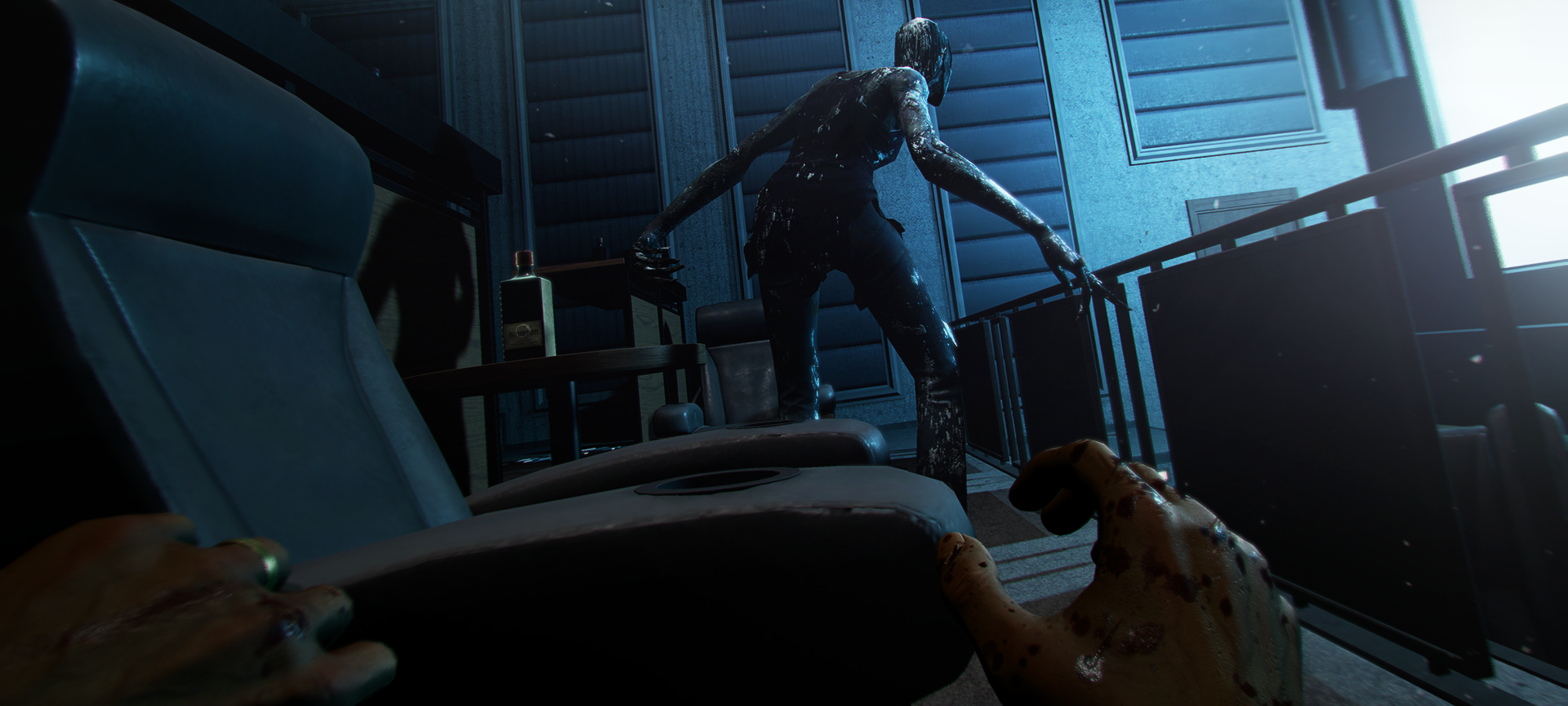Laptop Mag Verdict
Wraith: The Oblivion - Afterlife is the first VR entry in the World of Darkness series. The rich world will draw you in for a terrifying experience that is occasionally betrayed by its game mechanics.
Pros
- +
Well-crafted environments
- +
Compelling storyline
- +
Some excellent moments of pure terror
- +
Effective inventory and tool management
Cons
- -
Lack of challenges
- -
Some frustrating gameplay mechanics
Why you can trust Laptop Mag
After reading about my colleague’s literally sickening experience playing a preview of Wraith: The Oblivion - Afterlife (WTOA), it was with a bit of trepidation that I took on reviewing the fledgling horror effort from Fast Travel Games. I have a love/hate relationship with the horror genre, but I’m mainly put off by those that opt for pure gore. Tension-building atmospheric horror is another story entirely and that is certainly what this developer is aiming for.
When it comes to the overall look and feel of the game, WTOA hits that target; the creepy aesthetic oozes unsettlingly over every environment and character. However, a few game mechanics pulled me out from the gripping environment, an unfortunate effect for a game that excels when you are fully immersed in its environs. Survival horror fans will want to give this game a spin, as the roughly eight to 10 hours of gameplay can make for a spine-tingling weekend of gaming, but this won’t win over new players to the genre.
Wraith: The Oblivion - Afterlife: price and availability
WTOA is available starting today for $30 on Quest 2 and on the Oculus Rift through the Oculus platform. If you want to pick it up through Steam, you’ll need to wait one more month until May 25. You can then buy it there for HTC Vive, Valve Index or Oculus Rift. It’s also coming to PSVR in 2021, but there is no firm release date yet.
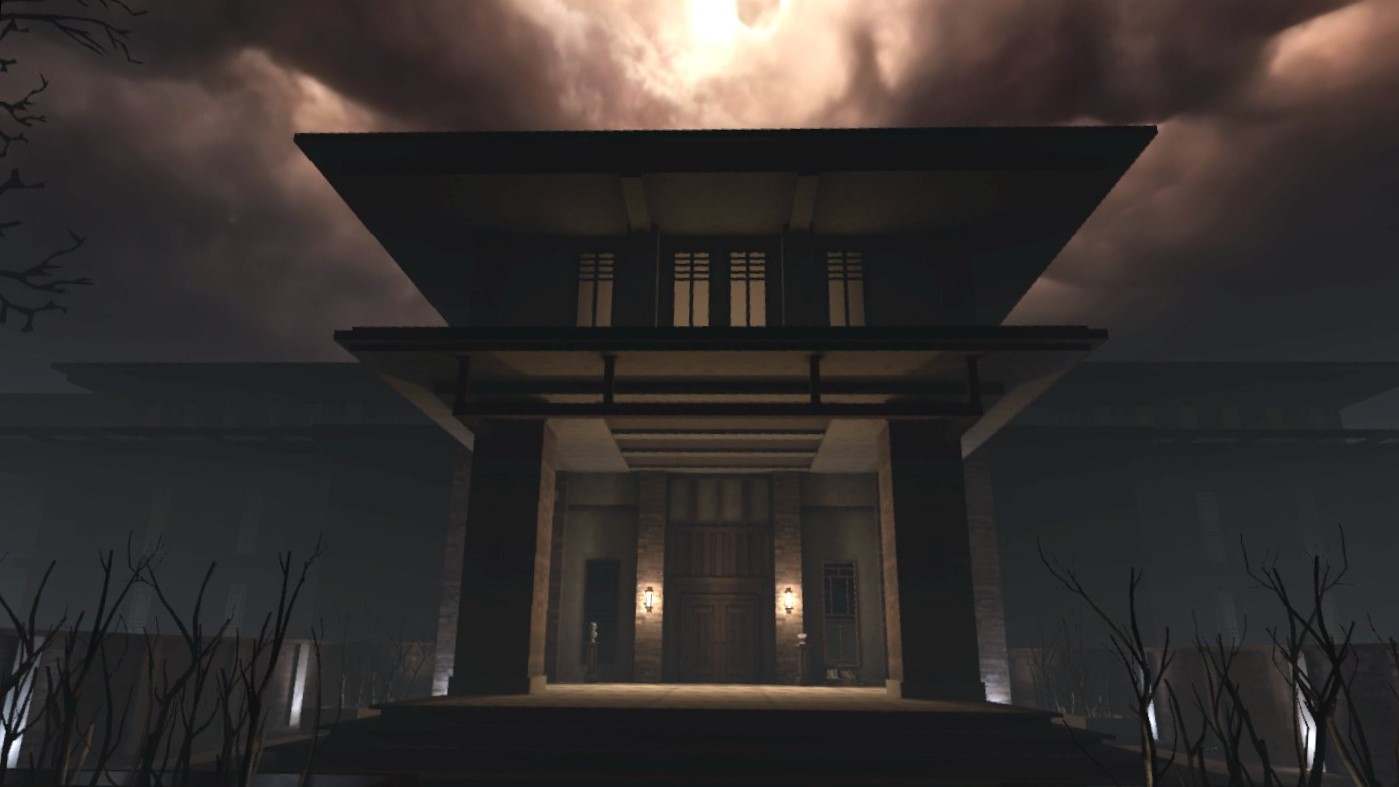
Wraith: The Oblivion - Afterlife: plot (minor spoilers)
I’m not going to give you a full rundown of the plot, as the story is a significant part of the experience with WTOA. But I'll share the initial setup and general concept to help you decide if it’s right for you. The game offers trigger warnings at the outset for photosensitivity, death and suicide. Fans of Vampire: The Masquerade and/or Werewolf: The Apocalypse might be interested to know that this game takes place in the same World of Darkness universe, but it doesn’t require knowledge of those games.
The game starts with you lying dead on the ground ( no you didn’t manage to lose already),. You find yourself in the afterlife as a Wraith, and while it looks like your postal code is closer to hell than heaven, it’s not clear at this stage where exactly you are. Winding your way through a barren rocky landscape, you have a few initial run-ins with what we’ll call ghosts which begin to fill in some details for you.
Following along the trail serves as a brief tutorial on the basics of movement. This is where your first supernatural power is introduced which allows you to pull objects into your hand from a short distance (congratulations undead Padawan!), if only you could also use a lightsaber then this game would be much easier.
As you reach the end of the trail, you enter the grounds of the Barclay mansion. Now the game is properly underway. You discover quickly that you are (or were) Ed Miller, a photographer hired to capture photos of a séance for Mr. Barclay. Needless to say, things must not have gone well.
Sign up to receive The Snapshot, a free special dispatch from Laptop Mag, in your inbox.
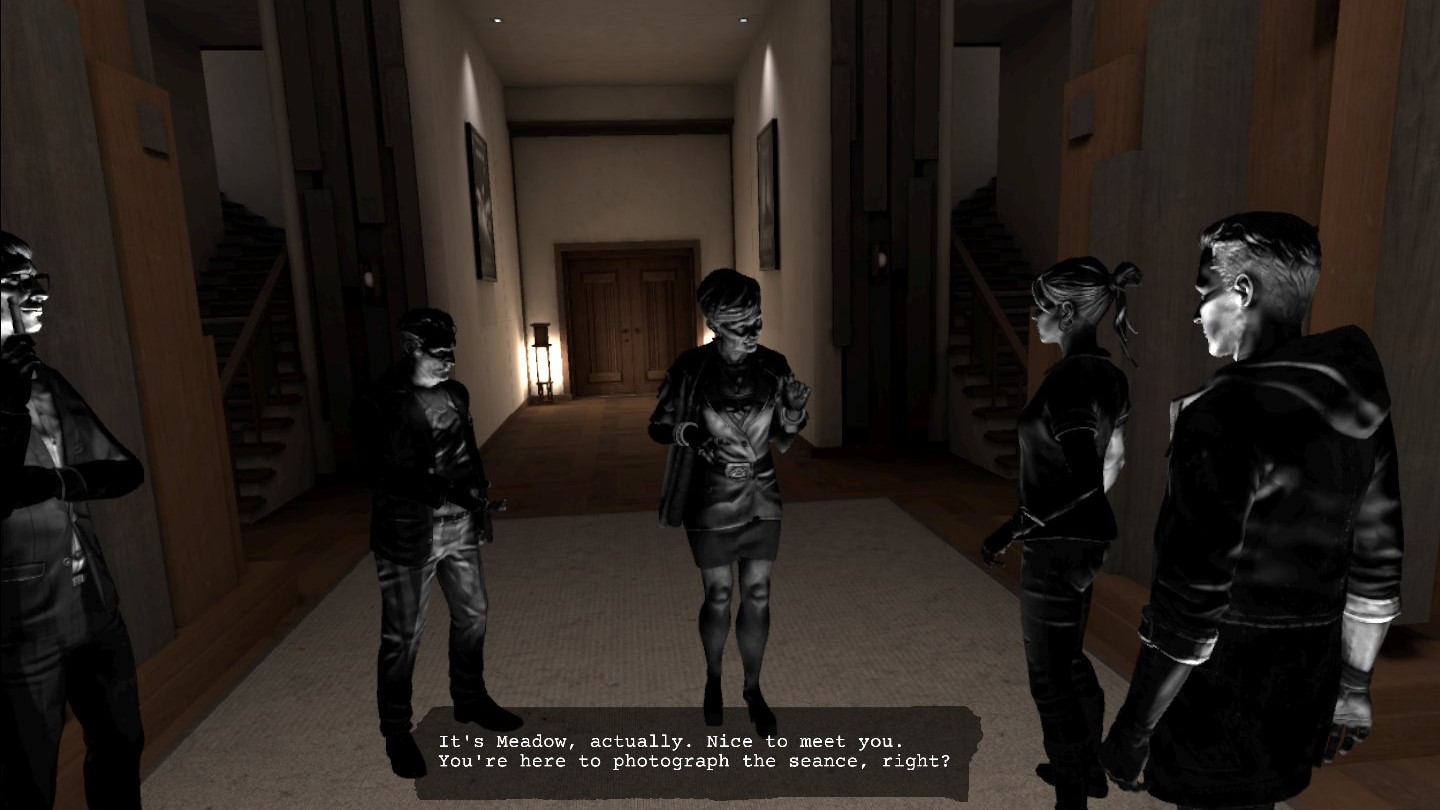
Like many things in the game, you learn this information from the ghosts that are triggered by your mere presence or by your Relic camera, the first item you obtain. I say ghosts because of their appearance, but really, they are more like memories, simply playing out moments from the past. Other details come to you from another spirit that typically speaks as a disembodied voice in your head, but at times pops his horrifying visage into view. The odds and ends you find throughout the mansion and grounds will help complete the picture of what’s going on. When you find these items, they are added to the “Memory Palace” which you can visit from set points.
I don’t want to give away too much of the plot so I'll stop there. While the game is very much survival horror, the whodunit motivation is underlying it all as you try to get to the bottom of what happened to you and everyone else in this mansion. Along the way, you will encounter a variety of different Spectres that, unlike the ghosts, notice you and will “kill” you (send you to Oblivion). You gain additional abilities as you go, allowing you to track important objects and spirits and to pass through walls. Finally, new tools like your flash and voice recorder (among others) will help you defend yourself and unlock more clues around Barclay mansion.
The game takes place in modern times (you died in late 2019), although the old Hollywood aesthetic of the mansion and many of the characters make it feel like a 1950s period piece at times. I’m a sucker for that setting, and it is rendered fantastically with well-considered details throughout. Eerie though it may be, wandering around the mansion purely to take it in can be enjoyable when you don’t have a Spectre stalking you.
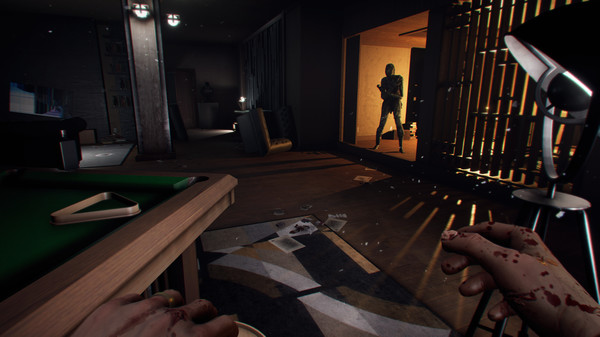
Wraith: The Oblivion - Afterlife: gameplay
The basic gameplay of WTOA is pretty simple; you explore the grounds of the Barclay mansion, which involves moving throughout the building and its surrounding gardens, while avoiding being sent to Oblivion by the Spectres and trying to solve your murder.
The mechanics of the game as it pertains to the Spectres are what ultimately pulled me out of the game at times. The maddeningly slow pace of your character, even when using a button labeled “sprint” does simulate a nightmare in which you are presumably running through molasses and/or have the legs of a toddler, but I found it insufferable in a few instances. One encounter that I got hung up on required at least 15 attempts to get past. After attempt six or seven all terror was gone, replaced with an icy dread at the thought of having to go through the blasted thing again.
You have no method to defeat the Spectres, which is perfectly common for a true survival horror title. You can merely evade. For the most part, this involves crouching and staying concealed. Walking or being spotted will draw them to you immediately. If you are out in the open, this is an immediate trip to Oblivion sending you back to the last save point. The save points are a swirling tangle of items around a glowing globe and you will not want to miss them.
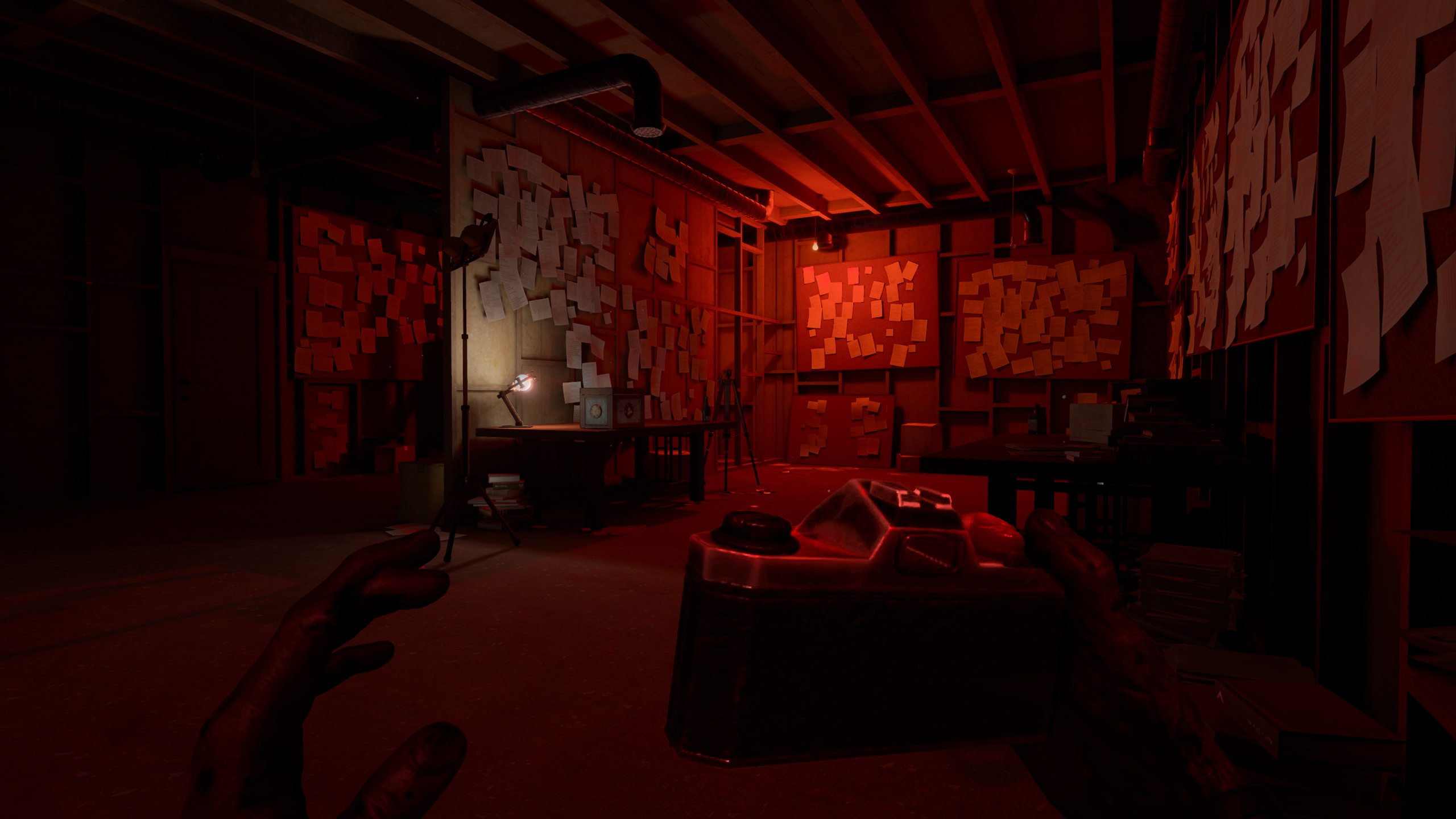
While you are still concealed, you can draw the attention of a Spectre away from an area by hurling found objects; small rocks and liquor bottles are readily available in many areas of the mansion grounds. This worked inconsistently in my experience with some Spectres far less interested in the noise. If you are faced by a charging Spectre, your only options are to fire your Flash in its face or hurl an object at it but either method stuns the spirit for only three to four seconds. With your rate of movement, that won’t get you far. This is truly a last resort and you need to be within 10-15 feet of a door or a hiding place or all will be for naught.
Moving on to the investigative aspects of the game, there is logic to be applied at times, it is mostly a case of exploring the entirety of the mansion with a careful eye. Objects that need to be found will glow which helps you spot them even if they are within a cabinet or set of drawers. While not particularly challenging, piecing events together by viewing new memories and finding notes, newspapers, and other items that are then available in the Memory Palace is satisfying once the story comes together.
If you are looking for challenging puzzles, look somewhere else. There are occasionally safe combinations or key codes to find, but they are typically nearby. At times, some of your growing collection of tools are needed, such as a voice recorder to unlock more safes with a voice lock on them, but that hardly requires a considerable leap in logic. In general, you’ll never find yourself questioning what is required in a given situation.
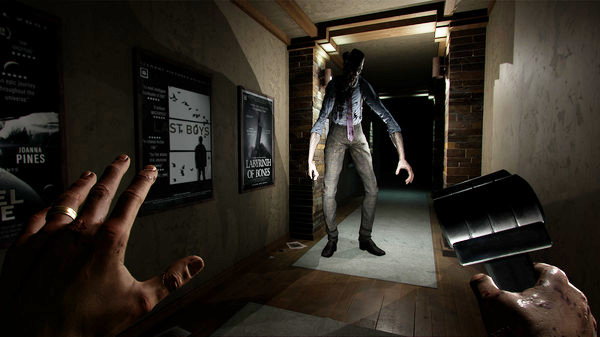
Beyond the ability to summon objects to your hand, you gain the power to locate objectives by a hotter and colder mechanic that has the veins in your arm glow brighter when pointing in the right direction and an intensifying heartbeat indicates nearby Spectres. Your final power is quite handy, allowing you to move through walls via the same terrifying inky black portals that your demonic spirit companion uses.
The only power that feels inconsistent is your objective locating power. It isn't clear on why it was only available at certain times. This brings me to more of an overarching complaint: a lack of explanation for some elements in the game. The flash is a perfect example; it can be used as a simple flashlight and will also burn away the roots that block certain paths and objectives in the game, but as previously referenced, it can also stun Spectres. sI don’t recall that instruction and it’s a pretty important one. I think so much of the game being intuitive caused a few misses on other features that are less obvious.
One final frustrating game mechanic is the doors. This feeds the fear factor to some degree as fumbling with a door handle as a hideous creature is shrieking and heading your way is unquestionably terrifying. However, the door physics doesn't work well . Opening a door fully required a combination of moving through it or away from it as I pulled the handle, and closing felt similarly clumsy. I do feel as though I was getting the hang of it toward the end of my time with the game, but that is a problem for a game that is a single eight-to-10-hour experience.

Wraith: The Oblivion - Afterlife: performance (Quest 2)
Performance wasn’t an issue for me during my hours playing WTOA, but there are certainly some of the telltale signs of a game that is at the edges of what the Quest is capable of. I would notice elements improving in clarity as I drew nearer to them and lighting behaved oddly at times with darkness receding for no seemingly no reason.
The latter, in particular, is well hidden as a game mechanic and it works regardless of whether it is covering for limitations or a deliberate decision. I’d be interested to see how this handles differently on the PC version of the game free from the limitations of the Quest 2’s processing power, but at no point did I feel pulled out of the game by its performance.

Bottom Line
Wraith: The Oblivion - Afterlife creates a compelling and often terrifying world that will have your palms sweating as you round the dark corners of the mansion and flee (probably unsuccessfully) from Spectres. While there are jump scares in the game ( despite the developer saying that wasn’t a goal), the overall sense of foreboding and fleeing from Spectres is far more terrifying than the occasional jump scares.
Overall, I enjoyed WTOA as an experience, but I found myself wishing that a few different choices were made regarding both game mechanics and some of the gameplay itself. Movement and stealth were my biggest frustrations, and as far as gameplay is concerned, additional challenges outside of the Spectre set pieces would have helped. That's especially true in a few instances where I wasn’t finding the next objective and my magic arm powers weren’t active. During these frustrating moments, the unsettling ambiance started to give way to a bit of a monotonous walking sim.
As I said at the outset, fans of survival horror or those who simply enjoy a good scare will have a good time with this game. It’s a genre that lends itself perfectly to VR and I suspect even the most hardened will enjoy some heart-pounding moments.
Sean Riley has been covering tech professionally for over a decade now. Most of that time was as a freelancer covering varied topics including phones, wearables, tablets, smart home devices, laptops, AR, VR, mobile payments, fintech, and more. Sean is the resident mobile expert at Laptop Mag, specializing in phones and wearables, you'll find plenty of news, reviews, how-to, and opinion pieces on these subjects from him here. But Laptop Mag has also proven a perfect fit for that broad range of interests with reviews and news on the latest laptops, VR games, and computer accessories along with coverage on everything from NFTs to cybersecurity and more.
